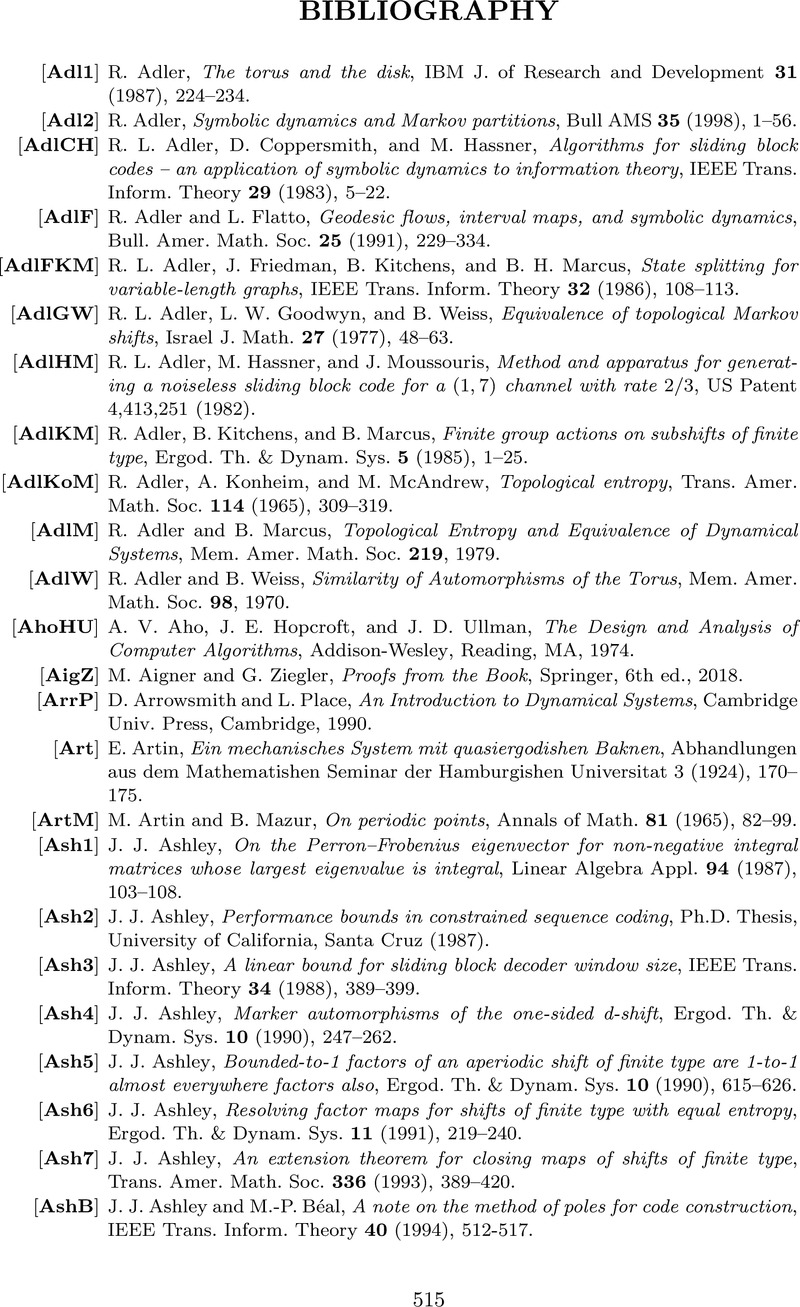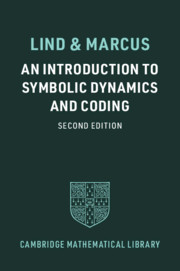Book contents
- Frontmatter
- Dedication
- Contents
- Preface to the First Edition
- Preface to the Second Edition
- 1 Shift Spaces
- 2 Shifts of Finite Type
- 3 Sofic Shifts
- 4 Entropy
- 5 Finite-State Codes
- 6 Shifts as Dynamical Systems
- 7 Conjugacy
- 8 Finite-to-One Codes and Finite Equivalence
- 9 Degrees of Codes and Almost Conjugacy
- 10 Embeddings and Factor Codes
- 11 Realization
- 12 Equal Entropy Factors
- 13 Guide to Advanced Topics
- Addendum
- Bibliography
- Addendum Bibliography
- Notation Index
- Index
- References
Bibliography
Published online by Cambridge University Press: 19 December 2020
- Frontmatter
- Dedication
- Contents
- Preface to the First Edition
- Preface to the Second Edition
- 1 Shift Spaces
- 2 Shifts of Finite Type
- 3 Sofic Shifts
- 4 Entropy
- 5 Finite-State Codes
- 6 Shifts as Dynamical Systems
- 7 Conjugacy
- 8 Finite-to-One Codes and Finite Equivalence
- 9 Degrees of Codes and Almost Conjugacy
- 10 Embeddings and Factor Codes
- 11 Realization
- 12 Equal Entropy Factors
- 13 Guide to Advanced Topics
- Addendum
- Bibliography
- Addendum Bibliography
- Notation Index
- Index
- References
Summary

- Type
- Chapter
- Information
- An Introduction to Symbolic Dynamics and Coding , pp. 515 - 530Publisher: Cambridge University PressPrint publication year: 2021



